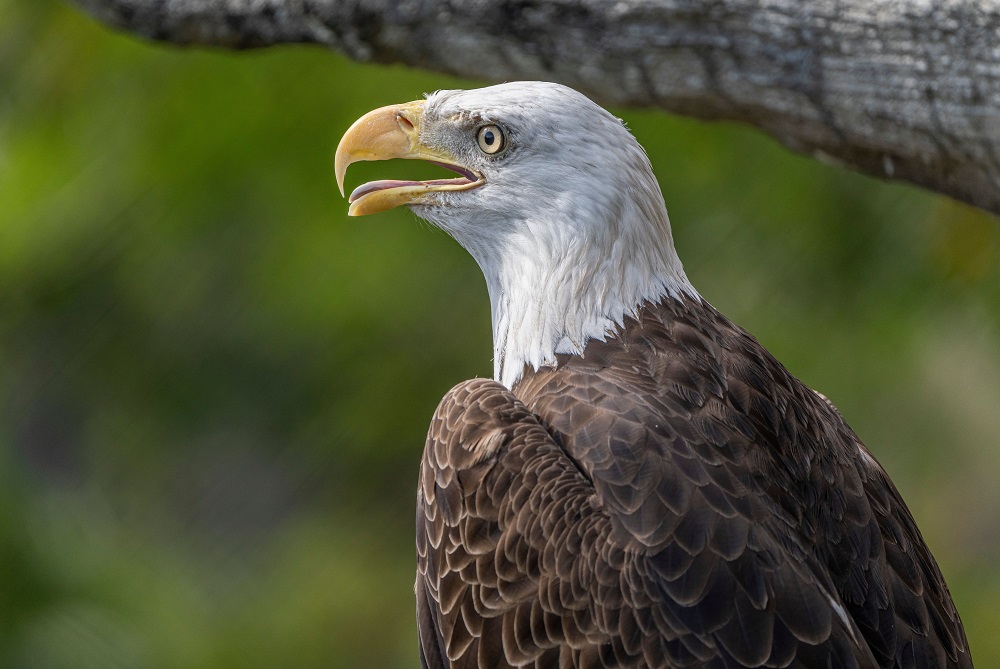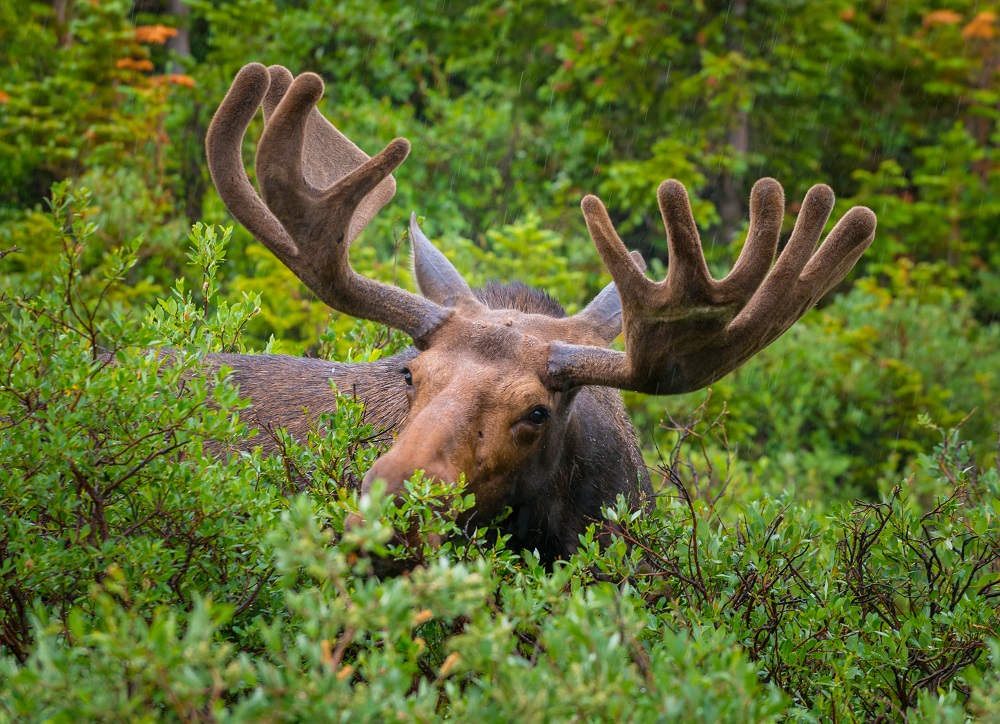These must-see animals in National Wildlife Refuges are so gorgeous you won’t believe are real!
Not only cats and dogs deserve to be in the spotlight! There are so many wild animals that we can admire from a certain distance, of course, but if you’re lucky enough to reside in America, you can witness so many species in the National Wildlife Refuge; you just have to know where to look for them.
In case you were not familiar, the National Wildlife Refuge System, which is administered by the U.S. Fish and Wildlife Service (USFWS), consists of over 560 units. These units protect (and occasionally restore) approximately 150 million acres of habitat for thousands of species, many of which are endangered or threatened.
The amazing thing about these refuges is that we can find them in every state, and every year they attract more and more people, both locals and tourists.
To see which national wildlife refuges are near you, consult the USFWS’s website. But without further ado, these are the must-see animals in National Wildlife Refuges that are worth some pictures too.

Bald eagle
Without the imposing bird that appears on our national seal, currency, and official presidential seal, what list of must-see animals in National Wildlife Refuges would be complete? It’s funny that this wild bird doesn’t live up to its name because it isn’t “bald” at all, but maybe it’s because the head is covered completely by white feathers, which may look from afar like it’s bald.
Bald eagles are the animals most closely linked to American identity, so it makes sense that they have many homes in the National Wildlife Refuge System, including James River National Wildlife Refuge, one of four refuges established especially to protect them.
One funny fact about bald eagles is that even though they’re quite large, they never catch their prey. When an Osprey is hunting, a Bald Eagle will harass it until the smaller raptor drops its prey in the air, at which point the eagle will swoop it up.
Although hunting, unintentional poisoning, and habitat destruction have caused eagle populations to decline in the past, the species has recovered greatly in recent decades and is now found throughout Alaska and the continental United States. If a bald eagle is lucky to live in its natural habitat, it can live up to 40 years or more. Isn’t that awesome?
Polar bear
With the risk of disappearing in the future, one of the must-see animals in National Wildlife Refuges is the sweet polar bear. In recent decades, the world’s largest land-dwelling carnivores have gained an unwanted reputation as a species that is clearly and visibly threatened by climate change.
As of right now, the only national conservation area where polar bears are known to den is the Arctic National Wildlife Refuge, which is nestled in the comparatively untouched parts of northeast Alaska.
While they’re sweet and cute-looking, especially the baby polar bears, it’s recommended to keep a certain distance if you spot them. Male polar bears are twice as large as females can weigh up to approximately 1700 pounds and are 3 meters in length. Furthermore, they might also consider you prey, and they can smell you from 32 km away even if there is ice between you two so be careful!
Besides polar bears, various other species of wildlife, such as caribou, moose, wolverines, musk oxen, brown bears, and black bears, can be found in the Arctic Refuge.
Have you ever seen a polar bear up close and not only on TV?
Pronghorn antelope
Does the pronghorn antelope sound familiar to you? They’re mostly found in Arizona, more specifically in Cabeza Prieta National Wildlife Refuge. The Sonoran pronghorn is a smaller and less common subspecies of the pronghorn than its cousin.
However, despite a successful captive breeding program, it is estimated that there are only 160 free-ranging Sonoran pronghorns left in the United States and another 240 in northern Mexico. This breeding program was founded as a “game range.” The Cabeza Prieta National Wildlife Refuge has been managed for wildlife for approximately 75 years. Today, the program focuses on pronghorns, bighorn sheep, and lesser long-nosed bats.
In 2025, there are approximately 500,000 Pronghorn antelopes in the western United States, with about 500 of them living in Yellowstone National Park.

Moose
With such an adorable face, fluffy ears, and antlers, moose is one of the must-see animals in National Wildlife Refuges. Alaska is home to the largest population of moose, which have come to represent the northern United States with pride. In the huge Koyukuk National Wildlife Refuge, a central portion of which has been declared as wilderness, moose are particularly widespread.
Same as other must-see animals in National Wildlife Refuges, it’s better to admire the moose from far away. I bet you know they’re big animals, but big isn’t the suitable word here; I’d go for HUGE instead.
You probably didn’t know but, the typical male weighs 881 pounds (400 kg), and the typical female weighs 771 pounds (350 kg). They can weigh as much as 1,800 pounds. Now that’s something! The average height of a moose is usually somewhere between 2 and 3 meters without their antlers, which, by the way, they shed every year without hurting.
As the climate warms, moose in other states have recently become victims of tick hordes, making this northern refuge even more crucial to the species’ overall survival. Sunset Country in Ontario is the perfect location for moose because they prefer colder climates. More than 80 degrees Fahrenheit is too hot for them. They will be in the water seeking to cool off on a hot summer day.
Growing in a suitable environment, a healthy moose can live up to 20 human years.
Bighorn sheep
Cute and maybe a little feisty, you won’t want to meddle in their business; otherwise, you might meet those horns, and it won’t be nice. For the curious ones, one of Arizona’s largest populations of desert bighorn sheep (a subspecies of bighorn), estimated at over 400 individuals, is protected by Kofa National Wildlife Refuge, most of which is listed as wilderness.
After years of decline, bighorns have recently recovered in some parts of the western United States, and some have even been reintroduced to areas where the species was once extinct, all thanks to conservation efforts. They are remarkable runners who can climb steep, sheer slopes with a grace that belies their size and strength, and they are a sight to behold wherever you find them.
However, despite all the efforts to protect this endangered species, in the present day, there are less than 70,000, which is sad.
Manatee
Folks from Florida might be familiar with this name, but for those who aren’t, you should know that manatees are one of the must-see animals in National Wildlife Refuges. The typical adult manatee weighs between 800 and 1,200 pounds and is around 10 feet long.
Over 31,000 acres of saltwater bays, estuaries, and brackish marshes make up the Chassahowitzka National Wildlife Refuge, which is primarily protected as wilderness.
This offers it a crucial haven for a species that has benefited greatly from conservation efforts since the 1970s but sadly is still at risk from threats like boat collisions and habitat loss brought on by humans.
If you ever have the chance to see a manatee, you should know they find humans nice and enjoyable and never hurt one. In fact, according to tourists and locals who go diving or swimming in the area, manatees approach them for belly rubs and head bumps.
Which of these wildlife wonders are you eager to see next time you’re in the area? Tell me in the comments.
Are you in a bad mood and do you need something to cheer you up? Then you might enjoy this one: Funny Wildlife Habits: Exploring 10 Amusing Quirks of Our Wild Neighbors.












